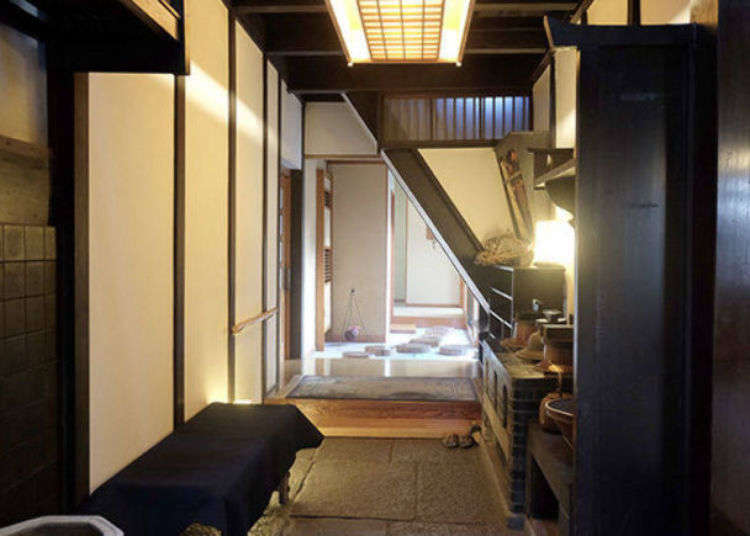
Hanbeifu is a long-established Kyoto tofu shop with a history of more than 320 years of making fu, bread-like food made of wheat gluten, and yuba, a delicacy made from the skin of gently boiled soybean milk. You might not be aware, but tofu comes in a wide variety of types - there are more than just the spongy namabu [pure kind]!
During the Edo Period in Kyoto, Hanbeifu was established as a shop specializing in fu. There it created elaborate dishes with fu, such as yakifu [wheat gluten leavened with baking powder and baked into long bread-like sticks] and shōjin namabu [devotee vegetarian wheat gluten] as well as yuba.
This shop also has a dining area, a Japanese garden, and a museum. Here we will introduce the many attractions of Hanbeifu, not only the products that are sold, but also tell you how you can sample them.
The history of fu and yuba begins in the Muromachi Period about 700 years ago. It originated and China and was brought to Japan by a monk, and it became a staple in temples and shrines, mainly in Kyoto.
Wheat is the main ingredient in fu, and because wheat was grown only in a very few places, it was an expensive commodity. Although it is commonly used in a wide array of dishes today, when it first arrived in Japan, only those of a very high social status were able to eat it.
Hanbeifu has been making fu for about 320 years
Hanbeifu has a long history. It is located about a 1-minute walk from the Kiyomizudera Gojo Station on the Keihan Main Line, the private railway line that runs north and south in Kyoto. If you go straight east from the Kawabata-dori that runs along the Kamogawa River, you will see a retro Western-style building and a Kyomachiya (traditional Kyoto townhouse) stand out.
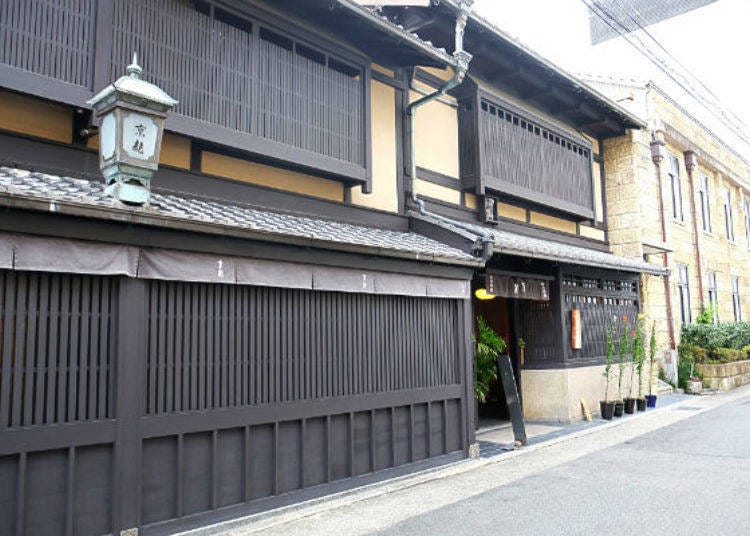

The Kyoto tofu company was founded in 1689 in the middle of the Edo Period. The founder opened a fu shop in Kyoto after working as a chef in a shrine. The 9th generation proprietor began making yuba at the request of temples.
The company has continued to make fu and yuba since then, paying careful attention to the water and wheat used. Currently, the 11th generation proprietor is in charge of the store. Let’s now take a look inside.
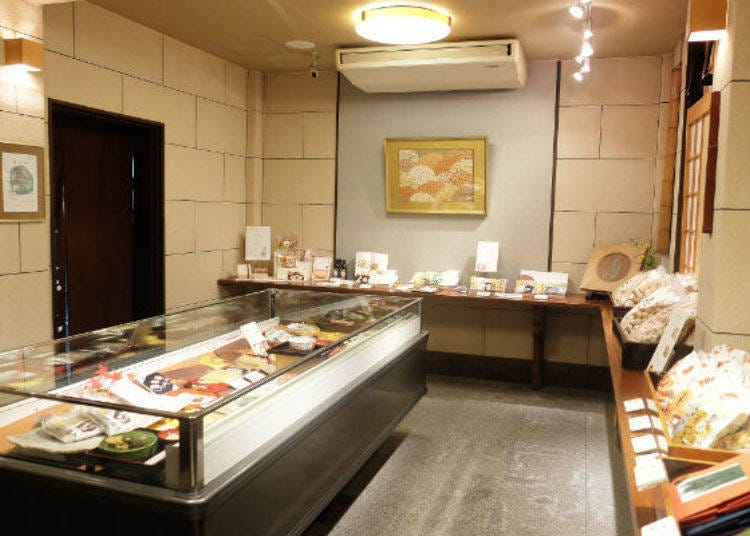
The main shop of Hanbeifu consists of this Western-style building and the Kyomachiya. There is a shop on the first floor of the Western-style building pictured in the right, and on the second floor is a collection of obento bako [lunch boxes] you can view at no charge.
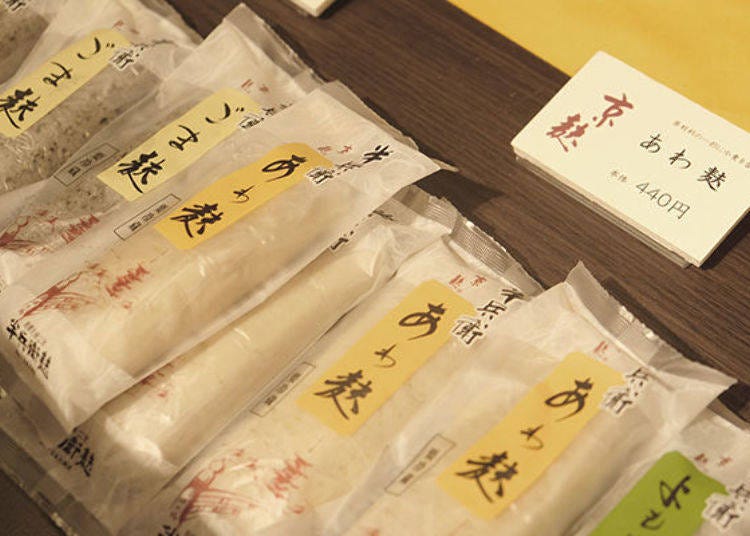
Standard products, such as fu containing mugwort, fu containing sesame, fu steamed buns, grilled fu, and shojin namabu, are sold on the first floor. There is also a large number of gift items and wrapping products, such as the dengaku [bean curd baked and coated with miso] set and the grilled fu set that is used in sukiyaki.
![▲ Products sold only in the main shop. The texture of the Shojin Namabu Zen (sansho [Japanese pepper]) is fu cooked in soy sauce and mirin, which is a source of protein for monks training in Zen temples (950 yen, 1,100 yen with box *both exclude tax), is such that you would think you are eating meat! There are also ginger and sesame flavors.](https://rimage.gnst.jp/livejapan.com/public/article/detail/a/20/00/a2000038/img/en/a2000038_parts_5cf8c56d46460.jpg?20201014085432&q=80)
As soon as you enter the Kyomachiya on the left, there is a space displaying literature and utensils related to fu and in the rear there is a Japanese-style garden and a tea room where fu cuisine is served.
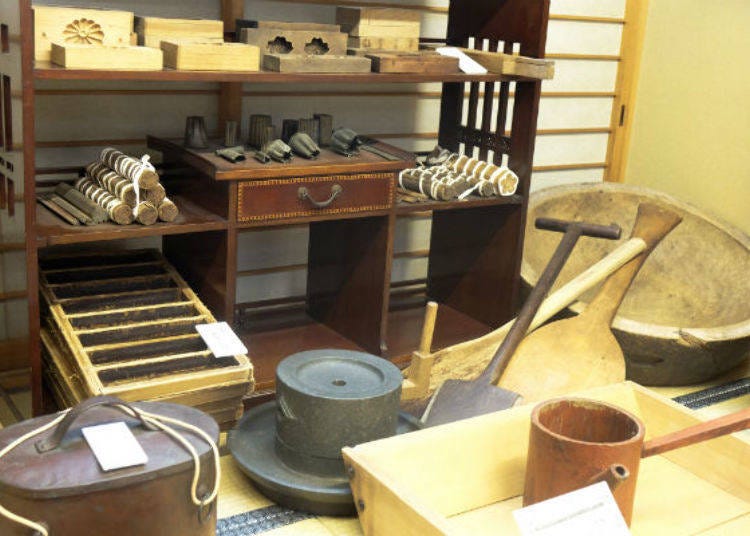
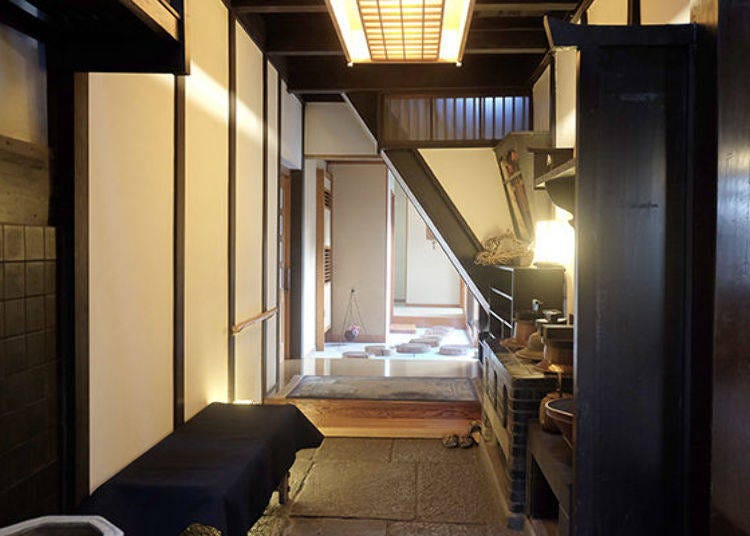
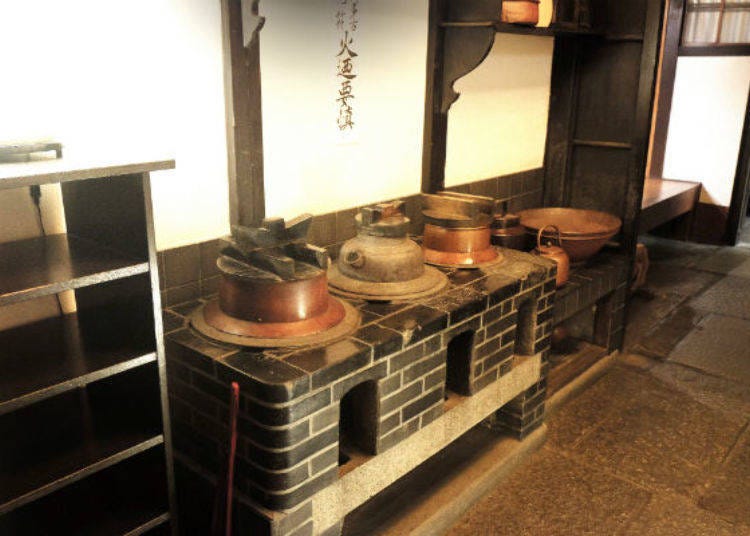
Try some steamed mushiyashinai in the tea room
There are actually many kinds of fu. To name but a few, there are namabu [pure fu], yakifu [grilled fu], Rikyufu [fu that is boiled in a spicy broth and then deep-fried], and fu no soboro [minced fu].
Fu can be cooked and seasoned in countless ways, such as by simmering it in broth, adding vinegar, and frying or grilling it. Mr. Jun Okiyama, head of PR, is often asked what the best way to eat fu is.
In response to that, the 11th generation master created a course of dishes made with fu and yuba called mushiyashinai (3,500 yen excluding tax). The name "mushiyashinai" comes from the Japanese expression meaning to "assuage one's hunger," ohara no mushi o yashinau, which means "to nourish the bug in your stomach." The dishes were created to "provide hints into the ways fu and yuba can be prepared and eaten," and in the tea room in the rear of the Kyomachiya, it is possible to do that, though reservations are required.
![▲This is the noren [shop curtain] to the tea room. Only mushiyashinai is served here.](https://rimage.gnst.jp/livejapan.com/public/article/detail/a/20/00/a2000038/img/en/a2000038_parts_5cf8c5d4df4ce.jpg?20201014085432&q=80)
![▲The tea room looking onto the tsuboniwa [inner garden] and Japanese-style rooms can seat up to 20 people. Remove your shoes before you enter.](https://rimage.gnst.jp/livejapan.com/public/article/detail/a/20/00/a2000038/img/en/a2000038_parts_5cf8c5e755013.jpg?20201014085432&q=80)
Soon after, simmered dishes, vinegared dishes, fried dishes, grilled dishes, and soup were brought in all at once. An impressive number of dishes were served!
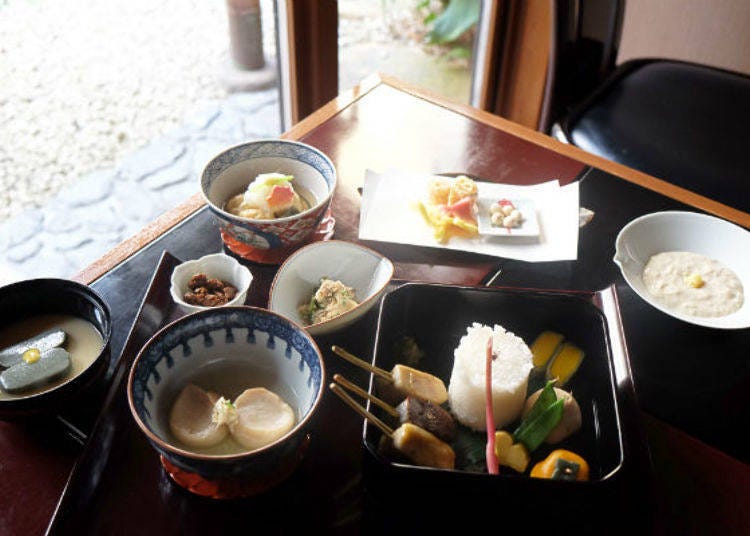
I was surprised by the wide variety of dishes that could be made just with fu and yuba. Not quite sure where to begin, I first scooped up some yuba. It had a rich soy aroma, and the slightly sweet flavor spread throughout my mouth. I enjoyed the pleasant creamy texture and how a drop of soy sauce on the topping mixed with ginger transformed the taste.
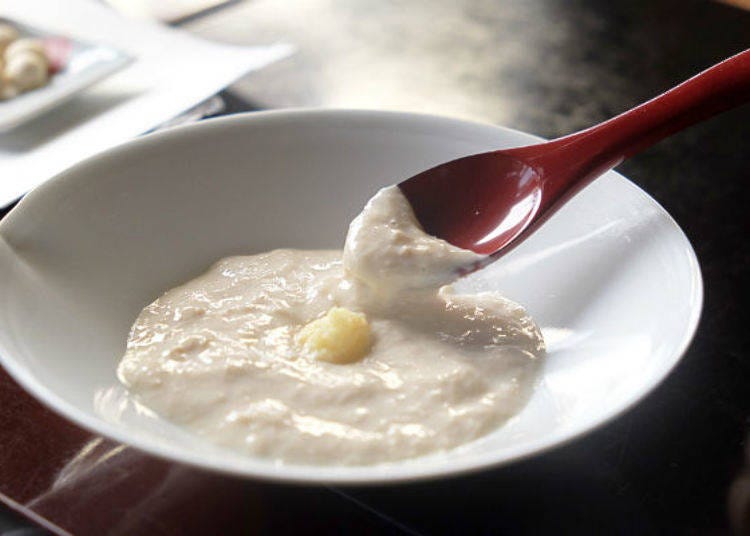
Next, I tried the stewed yakifu. Soup stock made with shaved bonito and minced kelp is used for all the dishes. The yakifu stewed to perfection in the broth felt deliciously dense when I lifted it with my chopsticks. Juices oozed out with just the slightest pressure of the chopsticks.
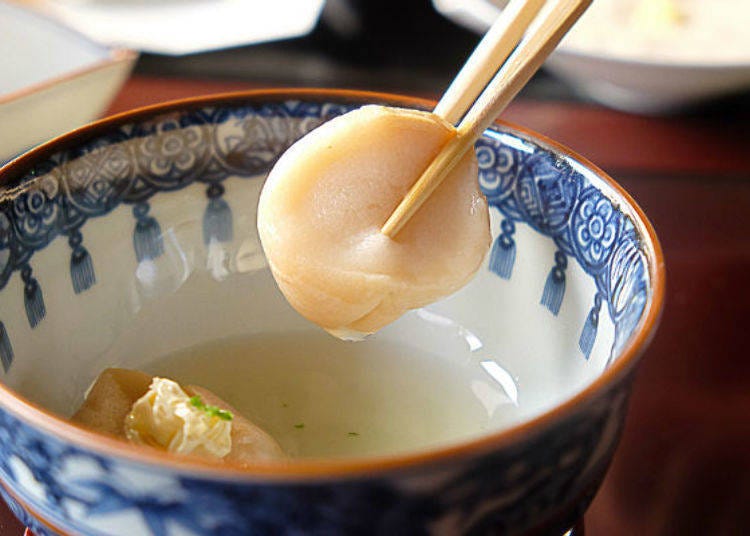
I ate it before a single drop could fall. Immediately the flavor exploded in my mouth. The elegant texture of the fu on my tongue was also delightful.
“Flour is kneaded into the gluten, so when the yakifu is cooked, it expands. The fine air bubbles check the expansion inside, resulting in the fine texture of the fu. The fine texture determines how good the fu is,” Mr. Okiyama explained.
The smaller the air bubbles, the higher the water content, and that is a crucial point. Such perfection is the result of Hanbeifu’s techniques refined over more than 320 years of making yakifu.
![▲The persimmon namabu reminds one of autumn and adds a bright touch of color to the other dishes. On the left are fried komaki [rolled] yuba, a medley of fu, and shiratama [rice-flour dumpling] fu.](https://rimage.gnst.jp/livejapan.com/public/article/detail/a/20/00/a2000038/img/en/a2000038_parts_5cf8c649098b6.jpg?20201014085432&q=80)
I could really feel autumn in the namabu. It has a chewy texture due to the rice flour being mixed with gluten before it is steamed. This dish alone adds a wonderful seasonal accent to the course.
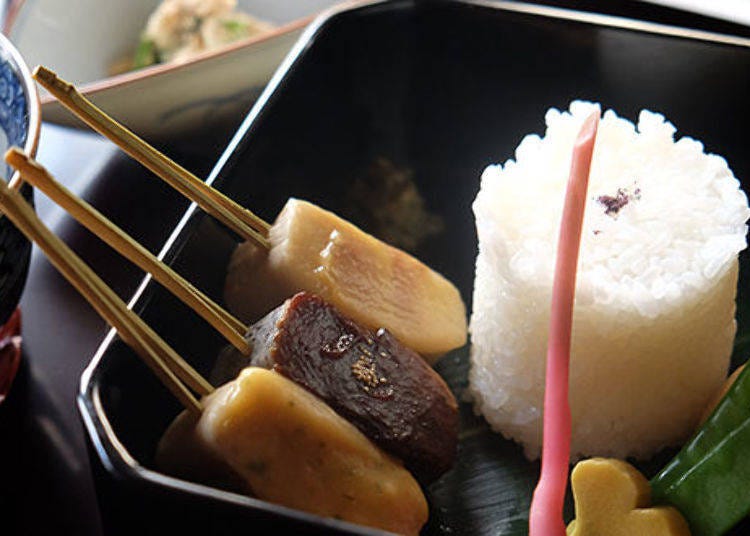
Next I tried the dengaku namabu. The fu was slathered with three types of miso: white, kinome [leaf bud], and red sprinkled with sesame. I loved the sweet, roasted flavor imparted by the toasted exterior covered in miso. It had the same delightful texture as rice cake! I could become addicted to its wonderful chewy texture!

Almost no animal products are used in the ingredients, and the portions are just the right size to ensure that nothing is left over afterward! One thing I noticed when eating these dishes was how simple the preparation of each one was. None of the dishes were pretentious, and they are no different from familiar grilled, fried, and homemade stewed dishes.
“Yes, that’s right. You don’t need to be a professional chef to make them, and we had help from some housewives,” said Mr. Okiyama. The ingredients are those that anyone can use and not special ones used by professionals...fu is a delightful ingredient that can be easily used in any number of dishes.
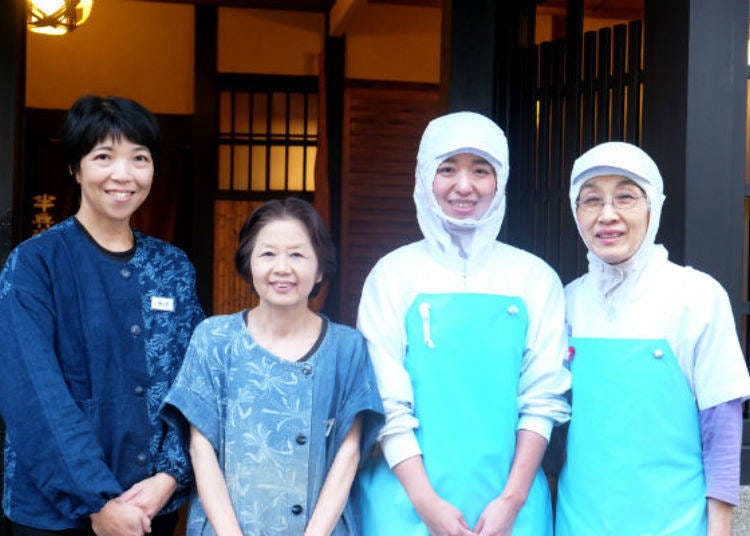
Why the Kyoto tofu tradition has been maintained
Hanbeifu has a history of about 320 years. One reason for this is the keen observance of two family precepts.
The first is to be a business that is of use to society and people, the profit from which should be used for the community; this is called sengikori in Japanese, which means principle before profit. The second is to preserve the teachings and lessons handed down through the generations and to study new technologies to meet the needs of the times, summarized in the Japanese expression fuekiryuko, which means “fluid and transitory.” The reason this business has been successful for so long is that those who work at Hanbeifu have followed these precepts since the founder handed them down.
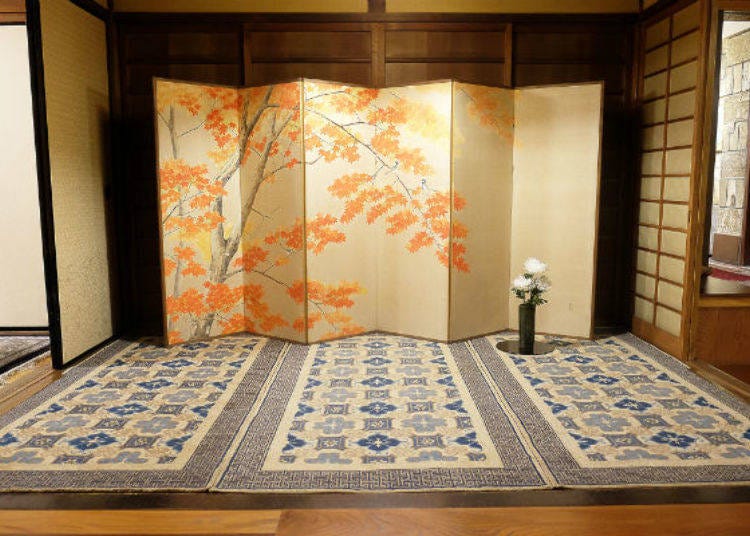
The observance of those precepts is evident in the following story. During the early Showa Era, when the country was at war, the government requisitioned all metal. At that time, utensils necessary for business, which were as valuable as life itself had to be handed over, even the metal cooking pots.
Further, during the final stages of the war and right afterward, there was a shortage of food and flour could not freely be bought, and even though it was necessary for making fu, rather than “soil the shop curtain” and shame the ancestors by purchasing flour on the black market, at one point the shop was unavoidably forced to discontinue business.
![▲The actual wooden box in which momiji [maple leaf] fu is delivered to the Imperial Household Agency](https://rimage.gnst.jp/livejapan.com/public/article/detail/a/20/00/a2000038/img/en/a2000038_parts_5cf8c6bfca6c3.jpg?20201014085432&q=80)
Every year momiji fu is offered to the Imperial Household Agency on the occasion of the birthday of the Empress Michiko. Even the Imperial Household loves the fu that is so representative of Kyoto. I hope you will try it when you have the chance.
Hats off to an amazing collection! The Bento Box Museum
After enjoying a meal in the tea room, go upstairs and visit the Bento Box Museum. Here you can see a collection of lunch boxes acquired over the centuries starting with the founder and at no charge. The idea for making this museum came from a desire to introduce this unique aspect of Japanese culture to the public. I am not exaggerating when I say that all of the beautiful pieces in this collection are artistic masterpieces and cultural treasures.
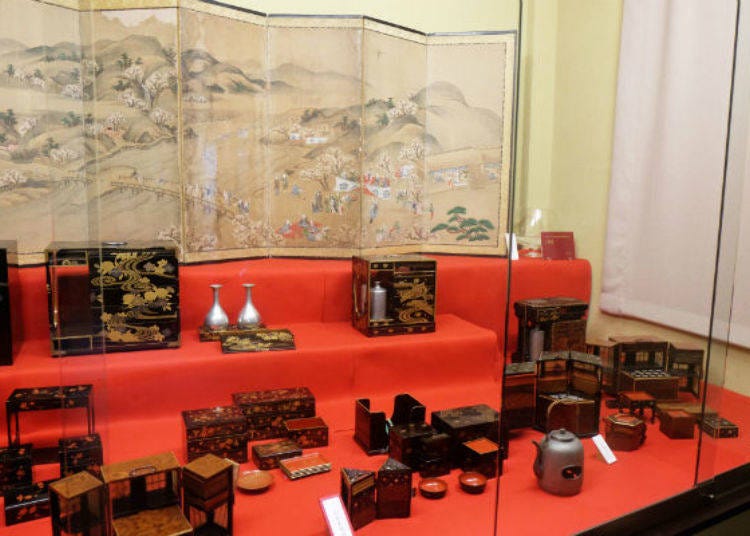
Items on display include seasonal lunch boxes, such as those for viewing cherry blossoms or autumn leaves, lunch boxes of woven bamboo designed to keep the food sanitary for use in the summer, as well as boxes for individual use, all of which are noted for their functionality. Some have unusual shapes such as those in the form of a tea kettle or boat.
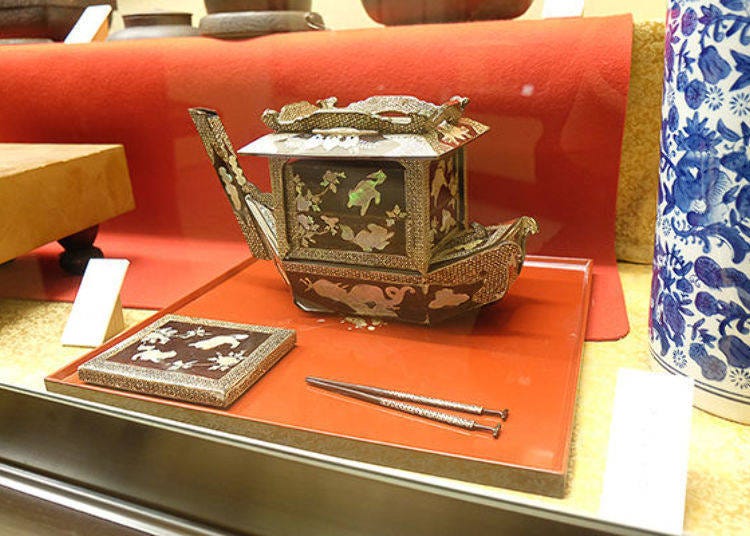
There are about 50 items on display at one time and these are changed each season. These are no ordinary lunch boxes. Just looking at one of these small boxes gives you a glimpse into the lifestyles of people long ago.
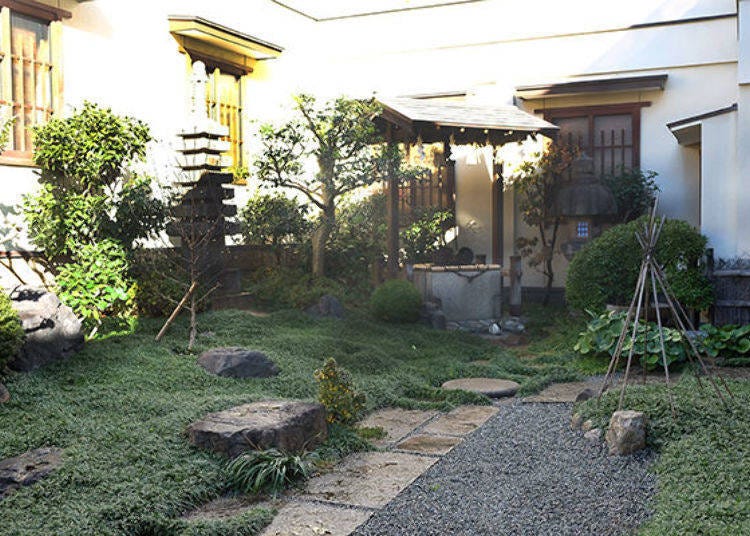
This was a rewarding experience that enabled me to gain a deeper understanding of fu. Not content to sit on its laurels and more than 320 years of tradition, the shop continues to look for new ways to meet the challenges and needs of the age. Visit Hanbeifu where you can eat, see, and experience the incredible culture and delights of Kyoto tofu.
-
Hanbeifu Main Shop半兵衛麸 本店
- Address 433 Shonincho, Gojukudaru, Toiyacho-dori, Higashiyama-ku, Kyoto City
- Phone Number 075-525-0008
Open: shop 9:00 a.m. ~ 5:00 p.m., tea room 11:00 a.m. ~ 4:00 p.m. (Can enter until 2:30 p.m., *reservations required)
Closed: end of year holidays
Book a table now!
We also recommend these Kyoto restaurants in addition to the above. Save time and hassle - book your table online today!
-
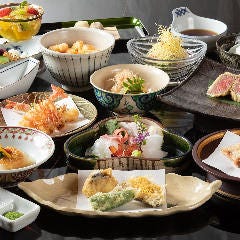 Kyoto Gion Tempura Endoh Okazakitei京都祇園 天ぷら圓堂 岡ざき邸Has Health & Safety Measures
Kyoto Gion Tempura Endoh Okazakitei京都祇園 天ぷら圓堂 岡ざき邸Has Health & Safety Measures-
Address
60, Okazakinishitennoucho, Sakyo-ku, Kyoto-shi, Kyoto, 606-8341
-
Nearest Station
Higashiyama Station (Tozai Line)
- Phone Number 075-752-1488
-
Address
60, Okazakinishitennoucho, Sakyo-ku, Kyoto-shi, Kyoto, 606-8341
Book an unforgettable experience in Kyoto!
Make your trip extra memorable by booking one of these recommended tours on our partner site, Voyagin!
*Prices and options mentioned are subject to change.
*Unless stated otherwise, all prices include tax.
Popular Tours & Activitiess
Recommended places for you
-
Goods

Yoshida Gennojo-Roho Kyoto Buddhist Altars
Gift Shops
Nijo Castle, Kyoto Imperial Palace
-

Jukuseiniku-to Namamottsuarera Nikubaru Italian Nikutaria Sannomiya
Izakaya
Kobe, Sannomiya, Kitano
-

ISHIDAYA Hanare
Yakiniku
Kobe, Sannomiya, Kitano
-

Osaka Aquarium KAIYUKAN
Zoos, Aquariums & Botanical Gardens
USJ, Nanko Port
-

Kambei Sannomiyahonten
Yakiniku
Kobe, Sannomiya, Kitano
-

Kanzenkoshitsuyakinikutabehodai Gyugyu Paradise Sannomiya
Yakiniku
Kobe, Sannomiya, Kitano
-

November Events in Kansai: Fun Festivals, Food, and Things to Do in Kyoto & Osaka
-
Ad

Recharge and Relax with a Healing Getaway at Kamenoi Hotel Toba
-

Everything You Need to Know About teamLab Biovortex Kyoto (2025 Insider Guide)
by: Wemmy Chau
-

Best Things to Do and See Around Kyoto & Osaka in September: Events and Festivals in Kansai
-

Celebrate a Dreamy Barbapapa Christmas at JR Osaka Station's Twilight
by: Guest Contributor
-
Ad

Experiencing Manga as Culture, Not Just Reading It: Expo 2025 with Rumiko Takahashi
Inspiration for Accommodations
-

Spacious Family Hotel in Namba: 20 Comfortable Stays for Family Fun
-

Charming Hotels to Enjoy the Spectacular Views of Arashiyama's Autumn Leaves from Your Room
-

Experience Stunning Views of Osaka Castle from Private Spaces: Top Hotels Near Osaka Castle
-

Recommended by Visitors! Arashiyama's Best-Rated Hotels
-

Family-Friendly Universal Studios Japan Hotel with Excellent Access
-

Enjoy a Comfortable Stay in Osaka! 10 Hotels with Convenient Airport Shuttle Services
-

Top 10 Recommended Hotels Near Namba Station with Great Access
-

Enjoy Night Views from Your Room! Recommended Hotels in Namba Area
-

Easy Oyakodon Recipe: How to Make Japan’s Definitive Donburi Dish!
-

38 Best Things to Do in Kyoto: See, Eat, and Shop Your Way Through Japan's Cultural Capital
-

'Hormone Dishes?!' 5 Weird Ways Americans Were Shocked by Osaka Cuisine!
-

Hoshinoya Kyoto: This Incredible Japanese Hotel Welcomes You By Boat on a Sakura-Filled River
-

Dining in Nara: 9 Local Foods & Restaurants You Can't Miss
by: WESTPLAN
-

Japan's Bath Culture: Tips You Should Know!
- #best gourmet Osaka
- #things to do Osaka
- #what to do in kyoto
- #what to bring to japan
- #best gourmet Kyoto
- #new years in Osaka
- #what to buy in nanba
- #Visiting Osaka
- #onsen tattoo friendly arima
- #daiso
- #Visiting Kyoto
- #best japanese soft drinks
- #japanese fashion culture
- #japanese convenience store snacks
- #japanese nail trends












